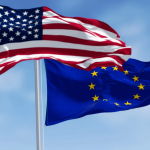When a founder decides to embark on the journey of launching a startup, the choice of where to begin—the European entrepreneurial ecosystem or the North American one—significantly affects the trajectory of growth. While global connectivity has blurred some borders, fundamental differences in market design, investor activity, and regulatory frameworks still create vastly distinct realities on either side of the Atlantic.
In North America, the United States in particular represents a single, unified, and enormous market. With over 330 million consumers sharing common regulations and a widely understood business culture, companies are able to scale rapidly from day one, often focusing solely on domestic expansion for years before even considering international markets. Canada, while smaller in population, benefits from proximity and close ties to this ecosystem, making it part of the wider North American growth corridor. The sheer size of this market means investors are accustomed to backing ambitious ventures that target national dominance before moving globally.
Europe, by contrast, is both more fragmented and more diverse. Startups in Berlin, Paris, Stockholm, or Barcelona must adapt to a patchwork of regulations, languages, consumer preferences, and fiscal policies. While the European Union has made strides in harmonizing regulations—such as through GDPR for data protection or EU-wide funding programs—practical differences remain. Hiring across borders, navigating employment law, or rolling out a product in multiple languages often slows the pace of execution and requires greater upfront strategic planning. For European founders, “internationalization” is not a strategic milestone reached years later; it is often an unavoidable reality from the very beginning.
From an investment standpoint, North American venture capital culture is shaped by a “go big or go home” mentality. U.S. investors may push startups toward rapid scaling, prioritizing growth metrics and user acquisition over profitability in the early years. The capital available is deeper, particularly in tech hubs like Silicon Valley, New York, Toronto, and more recently Austin and Miami. In Europe, investors typically tend to be more conservative and risk-sensitive, preferring steady growth and stronger business fundamentals before committing larger sums. Series A rounds in Europe are often smaller, and investors may scrutinize long-term sustainability more closely, which can slow aggressive expansion but potentially prevent premature collapses.
Talent acquisition is also influenced heavily by market structure. In North America, a highly mobile workforce accustomed to shifting between startups and established firms creates a strong pool of entrepreneurial talent. Across Europe, cultural attachment to stability and long-term employment can sometimes result in slower adoption of startup careers outside of major hubs like London or Berlin. However, Europe often benefits from stronger tech education pipelines, producing highly skilled engineers and product specialists, particularly from countries like Germany, Poland, and the Nordic region.
Ultimately, the differences in scaling environments come down to pace and complexity: North America offers enormous, high-speed opportunities paired with cutthroat competition, while Europe demands careful navigation of fragmented systems but can reward startups that overcome the initial hurdles with long-term resilience and diversified international reach.
Beyond funding, regulations, and market mechanics, entrepreneurship is profoundly shaped by cultural attitudes. In North America, particularly in the United States, the culture surrounding startups celebrates risk-taking and resilience. Failure is often reframed as a valuable learning experience, and serial entrepreneurs can find backing even after multiple failed ventures. This cultural norm often fuels boldness: founders are willing to scale quickly, pivot aggressively when needed, and experiment in ways that might feel reckless in more risk-averse societies.
Europe, on the other hand, historically has been more cautious. While the continent is home to a growing number of successful unicorns, societal views on risk and failure often remain more conservative. In some cultures, business failure carries a heavier stigma, which can discourage riskier entrepreneurial leaps. That said, Europe has been changing rapidly in this respect, with cities like London, Berlin, and Stockholm actively fostering ecosystems that promote failure-tolerant learning environments closer in spirit to Silicon Valley’s ethos.
Government policy also plays a critical role, albeit differently in each region. North America leans more heavily on private capital markets and networks of angel investors, accelerators, and venture capitalists. While government initiatives exist, the driving force comes from private-sector momentum. Europe, by contrast, has robust government programs, subsidies, and EU-backed funding opportunities designed to reduce barriers to entry for founders. While these can provide crucial early-stage lifelines, they sometimes come with bureaucratic complexity that slows decision-making.
University-industry collaboration is another area of cultural divergence. In the U.S., strong networks link top universities like MIT, Stanford, or Harvard with the private sector, channeling talent and innovation seamlessly into startups. In Europe, universities are increasingly fostering spinouts and incubators, but coordination often varies widely between countries and institutions. Scandinavian and U.K. universities are particularly strong in this regard, while other regions are still catching up.
Finally, consumer and societal attitudes toward new ventures play a subtler but equally important role. In the U.S., consumers tend to adopt new technologies and services quickly, creating fertile ground for rapid traction. In Europe, adoption can be slower due to stronger traditions of skepticism toward untested solutions, as well as a more complex regulatory framework safeguarding consumer rights. This forces European startups to build trust early on, which can make scaling steadier but slower.
For entrepreneurs deciding where to launch, recognizing these intangible cultural forces is just as critical as calculating funding opportunities. It’s not simply about access to capital or legal ease—it’s about how an ecosystem expects companies to behave, how failure will be interpreted, and how employees, consumers, and investors will judge the long-term vision of a company.
Final Thoughts
Deciding whether to launch a startup in Europe or North America is not simply a matter of geography—it’s a choice about ecosystem, culture, and growth philosophy. North America offers greater capital availability, a unified massive market, and a cultural optimism that prizes risk and resilience. Europe, in contrast, requires early cross-border navigation but benefits from strong educational pipelines, government support systems, and a long-term emphasis on sustainable growth over hype-driven expansion.
For founders, the key is not to view one region as unequivocally “better” than the other, but to understand how these differences align with the vision of their business. A healthcare startup dealing with complex regulations might benefit from Europe’s structured frameworks, while a consumer-tech app seeking viral adoption might find its natural footing in the fast-scaling North American environment.
In today’s globalized world, founders increasingly find themselves straddling both ecosystems—but those who begin with a clear view of these contrasts are best positioned to navigate early challenges, attract the right investors, and strategically scale on a global stage.








